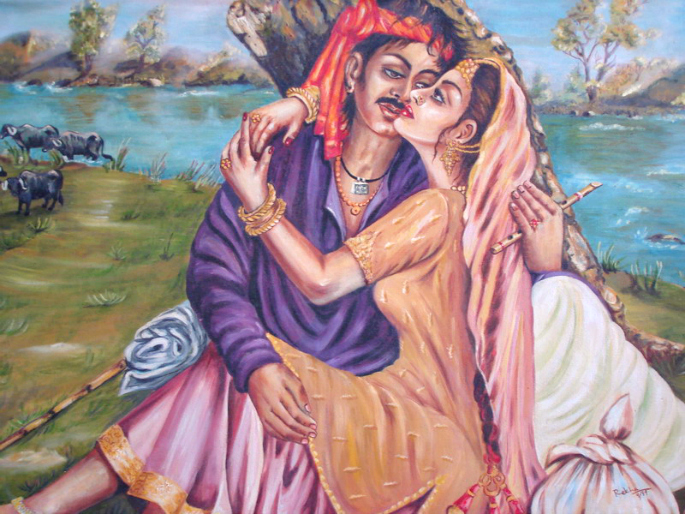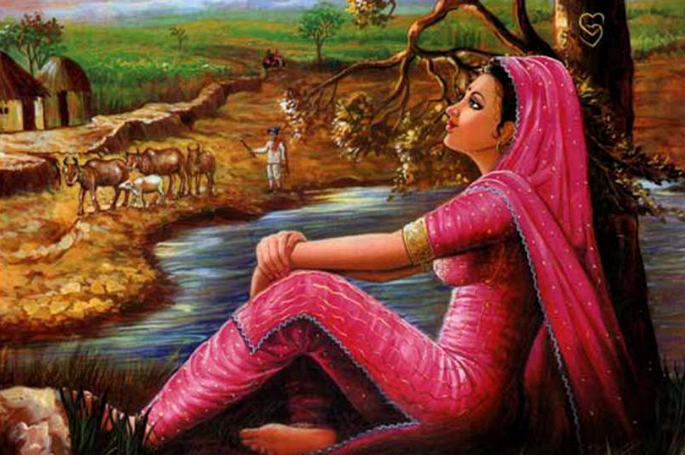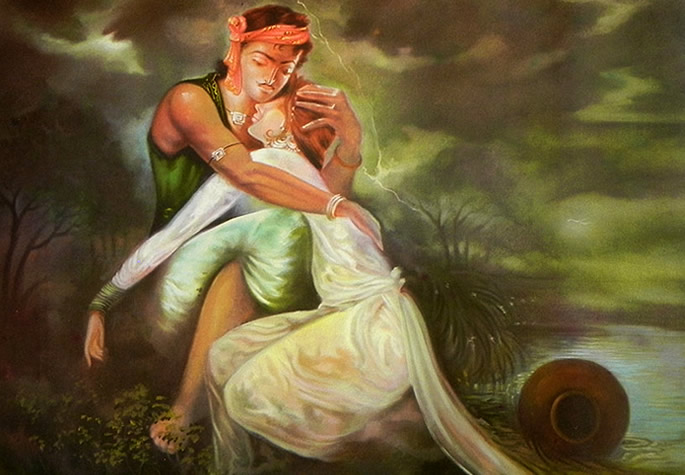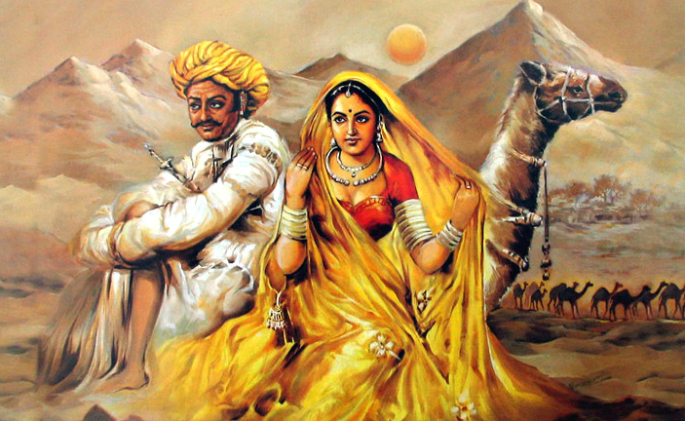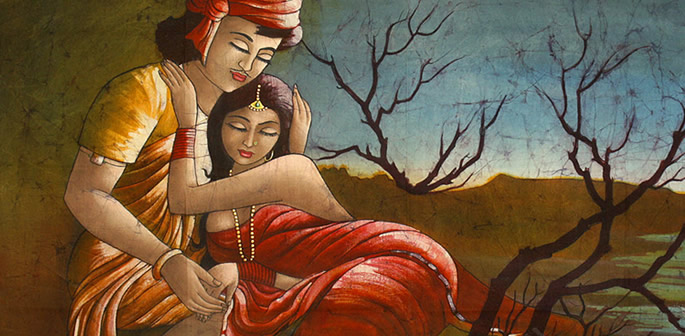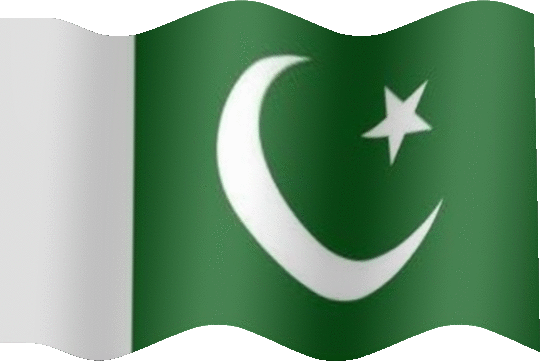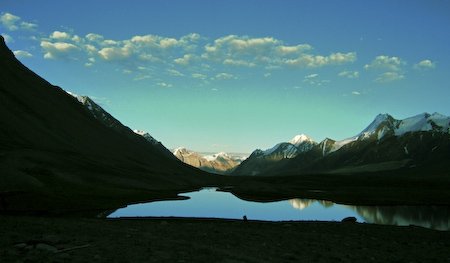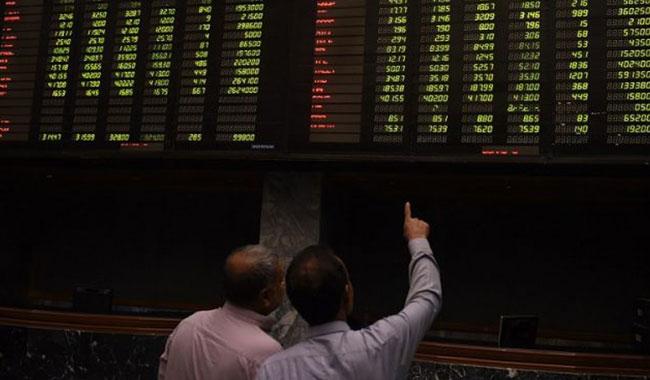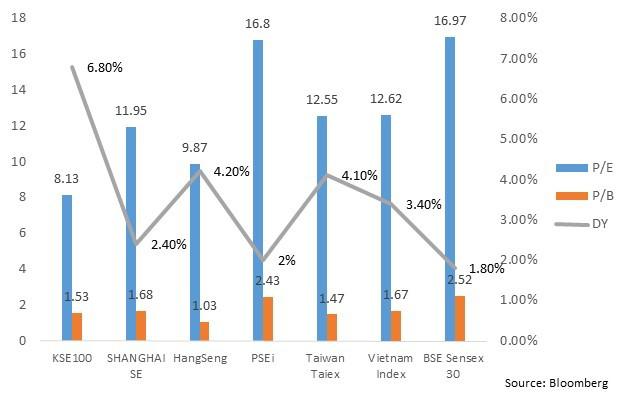Pakistan-A Nation Given Lemons by its Enemies Makes a Lemonade
Seven Big Challenges for Pakistan—and the Lessons They Could Teach
By
Imran Ali, Ali Akbar & Benjawan Yanwisetpakdee
Pakistan may be viewed as a case study of the fight for the survival of modern human civilization. Its complex and dangerous problems are not without possible solutions and the strategies that the nation chooses to provide a model for the rest of the world.
Humans have made enormous advancements in technology. Unfortunately, the challenges to human civilization are also rising quickly. Our ignorance and mismanagement of resources have led us down the path of uncertainty, and we now need all of our available technology to survive. Pakistan is perhaps most known for its struggle with terrorism. Meanwhile, few associate the country with the fight for modern civilization’s survival. Dwindling natural resources, continuous natural disasters, disease outbreaks, and economic instability in the region make for a worst-case scenario for human development. Pakistan is neighbored by China and India, the most populous nations on the globe, so its failure would start a chain reaction of global. On the other hand, the country’s success in meeting current challenges could make it a model for counteracting the problems of modern civilization. This article offers an overview of the major challenges confronting Pakistan, along with possible solutions that provide lessons for the rest of the world.
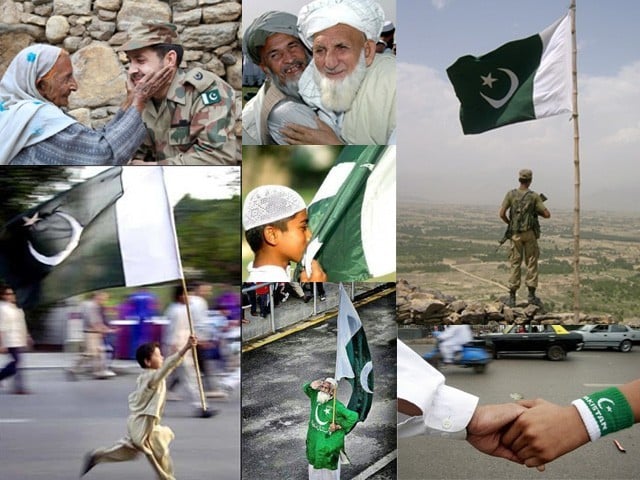
Challenge 1: Population Explosion
An average Pakistani woman gives birth to five children, thanks to a preference for large families and a particular desire for sons. Because of high birthrates and increasing life expectancy, Pakistan has one of the highest population growth rates in the world and is expected to become the fourth-most-populous country by 2050. Rising population triggers many other crises, including food shortages, energy and resources crises, and disease outbreaks.
Possible solutions: Pakistan’s rapid population growth highlights the need for effective family planning. Although the government has shown serious interest in the issue, the effects of its efforts are limited. According to one survey, each family welfare centre is visited by an average of two couples per day. The main reasons behind the problem are the overall low education and literacy rate and the inadequate mobility of Pakistani women. Pakistani society is dominated by men; women are scarcely seen in any walks of life, making them an invisible and inactive segment of the country. To help balance society, the government must require education for all citizens. Similarly, increasing the proportion of women in the workforce would increase women’s mobility. Along with free supplies of contraceptives, government incentives to limit childbearing can also motivate couples to use birth control.
Challenge 2: Food Security
Nearly 75% of Pakistan’s population resides in rural areas, where agriculture is the way of life. Unfortunately, Pakistan has not developed its food security policy at the national level. The agricultural sector has slowed by 2.7% from 2000 to 2010, and the country now struggles to provide its people with a sufficient amount of food. Calorie availability is, on average, 26% lower than that found in developed countries. Due to an inadequate food supply, many Pakistanis face the problem of malnutrition. The unmanaged slaughtering of animals, unregulated livestock smuggling to neighbouring countries, and a shortage of livestock feed make it impossible for the poor population to access beef and other meat. Approximately 17,000 acres are deforested every year, causing the depletion of wild resources from the forest, unprecedented ecological misbalance, and loss of biodiversity. The main factors involved in decreased food production are overpopulation, water shortage, energy deficiency, poor soil, and natural disasters. Most of the soil in Pakistan is deficient in macro- and micronutrients. Salinity and waterlogging add to the problem. More than 70% of Pakistan is arid and semiarid regions, where rainfall is insufficient for irrigation of crops; most rainwater is lost due to rapid evaporation and surface runoff, while floods and droughts cause further damage. Rapid urbanization also contributes to food shortages, as fewer people are now available to work on farms in rural areas. Meanwhile, with almost no technology inputs in many parts of the country, traditional farming cannot meet the increasing demand for food. A lack of infrastructure makes it very difficult to transport food from farm to fork.
Possible solutions: Pakistan has enormous potential to increase its food supply with agricultural reforms. Nearly 20 million acres of cultivable land is unused. Construction of major dams could provide an additional 2.5 million acres of land suitable for agricultural purposes. Pakistan has the chance to become self-sufficient if it can reach even 30% of its potential. National agriculture policy is needed to counteract the low food supply. The government has focused primarily on increasing wheat production, but in order to tackle malnutrition, it must focus on other nutritious crops, livestock, and fruits. To keep up with the increasing population, the agriculture sector must maintain an annual growth rate of more than 5%. The government, with the help of the international community, must improve rural infrastructure in order to develop Pakistan’s agricultural sector. Similarly, poor farmers need access to easy, corruption-free loans to increase their crop yields and improve agricultural practices.
Challenge 3: Energy Crises
Among developing countries, demand for electricity will rise 40% by 2030. In Pakistan alone, the demand for energy is expected to increase sevenfold. Yet the oil- and gas-reliant country, which currently imports 75% of its energy, lacks the necessary infrastructure, long-term planning, and institutional frameworks to meet current needs, let alone future energy requirements. The energy crisis badly affects the country’s agriculture, economy, the way of life, and technological advancement. A continuous rise in oil prices and electricity is causing inflation and devaluing the currency. Energy is becoming increasingly inaccessible the average person. These conditions are raising agitation, anger, and riots in the frustrated people of Pakistan.
Possible solutions: Fossil fuels comprise 80% of the world’s energy supply. Rising fossil fuel prices highlight the need for renewable energy sources in Pakistan. Hydropower, solar energy, biomass utilization and wind power are some of the best sustainable energy options for Pakistan. Pakistan’s location is blessed with unending sources of solar energy. Pakistan receives up to twice the solar radiation needed to power solar photovoltaic appliances, such as water pumps. It is estimated that Pakistan’s hydropower is operating at only 15% of its potential. Biomass utilization, especially biofuel production, can fulfil the oil requirements of energy. About 70% of Pakistan’s land is uncultivated and could be utilized to grow crops with high biofuel potential. Livestock in Pakistan is a good source of wet dung and can yield substantial biogases for fuel purposes. Additionally, Pakistan has the capacity to produce 400,000 tons of ethanol per year from its sugarcane crops.
Challenge 4: Disease Outbreaks
Pakistan’s rapid urbanization is creating numerous problems, the most threatening of which is disease outbreaks. Water sources in and near big cities are at risk due to wastewater mismanagement.
In Pakistan, wastewater use in agriculture carries a wide risk of diseases. Food-borne diseases are also a concern, and natural calamities such as frequent floods add more severity to the outbreaks. One study of southern Punjab, Pakistan’s most populous province, found that diarrhoea and hookworm related diseases were common among farmers working in farms fed by wastewater. Other diseases run rampant: Several types of hepatitis are very common. Due to political propaganda and misinformation, the fight against polio is much tougher. HIV is on the rise. And typhoid, malaria, and tuberculosis are still uncontrolled. Currently, the most serious disease outbreaks are dengue hemorrhagic fever (DHF) and Crimean-Congo hemorrhagic fever (CCHF). DHF is mostly found in the eastern part of the country, while CCHF is mostly found in the west. From 2005 to 2006, more than 3,640 patients were found to have DHF symptoms.
Possible solutions: Proper wastewater management can minimize the risks of many diseases, such as hepatitis, malaria, dengue, and typhoid. Although using wastewater in agriculture can be beneficial for Pakistan’s nutrient-deficient soil, its use must be coupled with the pretreatment of water to get rid of any chemical and microbial contamination. Diseases that are spread by human contacts, such as CCHF, must be handled with proper care when dealing with patients, as well as animals. Education and awareness by religious scholars can help to lift the fight against polio and HIV. Health must be given priority in rehabilitation after natural disasters. Along with the global community, Pakistan’s government must be built measures for fighting disease outbreaks—especially ones that may bring global catastrophes.
Challenge 5: Socio-economic Instability
According to the Ministry of Finance’s annual economic survey, Pakistan’s GDP growth in 2013 was 3.6%, down from 4.4% in the previous year. The economy is severely affected by the energy crisis, terrorism, and the global economy, and the country operates with a large deficit, thanks to the administration’s reluctance and inability to cut spending or raise taxes. Meanwhile, the value of the Pakistani rupee has decreased in recent years. Each time the rupee falls, both inflation and foreign debts increase. More than 60% of Pakistan’s population lives below the poverty line, leaving many unable to obtain or pay for food, healthcare, education, and energy. While many factors contribute to the country’s rampant poverty, the energy crisis, in particular, has a strong effect, because of its negative impact on Pakistan’s agricultural and industrial sectors. Entire factories are often outsourced, which leads to unemployment and disturbs supply and demand and the balance of imports and exports. Unemployment and poverty have led to high rates of depression, anxiety, and suicide, as well as an increase in crime. Unemployed youth are frequently targeted for recruitment by terrorist organizations, who offer them the means to afford food and an opportunity to show their anger against society. Most of the country’s suicide bombers are under 20 years old.
Possible solutions: Pakistan has to deal seriously with its energy crisis. Consistently available and affordable energy would lubricate agriculture and industry, which would, in turn, raise GDP and increase employment opportunities. Coupled with reforms to corrupt government spending and tax collection policies, increasing tax rates on certain sectors would provide the country with much-needed growth. Improved infrastructure would result in better trade opportunities with China and central Asia, while better trade between India and Pakistan could bring enormous economic benefits to both countries. The government needs to focus efforts on decreasing suicides and improving mental health. Public sports programs and technical education for unemployed youth would provide the country with young, healthy, and skilled labourers and members of society. And laws aimed at improving income inequality could help to eliminate hate throughout society.
Challenge 6: Natural Disasters
Mother Nature seems unhappy with Pakistan, which faces severe crises with continued floods, earthquakes, drought, and global warming. Despite heavy investment in irrigation, Pakistan is vulnerable to continuous floods. Due to climate change, the intensity of floods in the Himalayan rivers has increased in the past 20 to 30 years. Human intervention in Pakistan has worsened scenarios by building unnecessary embankments and improperly using the land. The Indus flood of 2010 was one of the greatest disasters in the history of mankind, affecting more than 14 million people and killing nearly 2,000, with approximately US$9.5 million worth of losses to business, agriculture, and other parts of the economy. According to the UN, the humanitarian crisis caused by the flood was even greater than Japan’s 2011 tsunami and the disastrous earthquakes of Haiti and Kashmir. Nearly all the world’s glaciers are on the verge of disappearance, including the Himalayan glacial reserves. Billions of people in the Indian subcontinent rely on this water reservoir, which supplies the Indus, Ganges, and other rivers. Over the past century, the average global temperature has increased by 0.6°C (1°F) and continues to rise. The Himalayan glaciers have begun to melt, threatening frequent floods, loss of water reservoirs, and a rise in sea levels. Climate change has also been observed as a trigger for the increase in the outbreaks in northwest Pakistan of Plasmodium falciparum, a parasite that causes malaria. Similarly, a continuous decrease in precipitation, especially in arid and semiarid areas, is causing a long-term drought. Pakistan is located in a region that experiences frequent earthquakes. In 2005, a devastating, 7.6-magnitude earthquake killed more than 82,000 people and injured more than 126,000. The earthquake also triggered massive landslides and caused dams to break.
Possible solutions: Natural calamities cannot be avoided, but their intensities, frequencies, and effects can be minimized. Floods in Pakistan are caused by excessive monsoon rain and global warming. Construction of dams can help to store the excess floodwater, which can be used for agriculture and to generate hydroelectricity. Global warming must be fought at the global level by controlling greenhouse gas emissions and by using a carbon credit system. The government of Pakistan must ban the extensive deforestation in the country, as well as solve the energy problem because the trees are mostly cut for energy requirements. Improving public transport systems would minimize individual car usage. There is also a need for nationwide applicable building construction policy to control the effects of earthquakes. Earthquake-proof houses have proven effective, and nationwide quick-response emergency teams equipped with modern technologies can minimize the aftereffects of natural disasters.
Challenge 7: Nuclear War Threats
Pakistan is of great geostrategic importance. India and Pakistan have fought three major wars and many small military conflicts. The warrior minds are visible as both sides spread the hate and push for war at all times. It may be that they simply do not fully understand the consequences of a war between two countries. The outcomes will not be regional; they will bring global suffering. India is a big country with superiority in conventional weapons and instruments of war. However, Pakistan’s nuclear arsenal compensates for this disparity. Each country has more than 100 nuclear warheads at its disposal. A nuclear war between the two countries could kill more than 20 million people in the region, while a nuclear winter caused by the generation of smoke could cripple agriculture of the whole world.
Possible solutions: Both Pakistan and India—and in fact, the entire world—are left with no option but to resolve all their issues through dialogue. War is never a solution to any problem and always a trigger for other problems. The international community must insist that both countries sit together and have a dialogue under UN mediation. There are better uses for nuclear technology than bombs. In the winter, winds are blown from Pakistan to India, and in the summer, Pakistan receives winds from India, making it impossible for these neighbours to think that they will be unaffected by nuclear war. Strategies, Prospects and Hope Pakistan is facing huge, interconnected problems in many areas. The problems begin with people, and, in Pakistan’s case, with overpopulation. The increasing population will require more energy, food, employment, and health facilities. The avail problems, including employment, food production, and underdeveloped infrastructure. The long-term strategy should focus on health care, education reforms, infrastructure development, promoting agriculture, and counteracting explosive population growth. Conditions in Pakistan are not perfect, but not all is bad. Pakistani society looks well aware of the challenges they are facing. Thousands of new PhD scientists generated by Higher Education Commission of Pakistan look committed to providing scientific solutions to the problems Pakistan is facing. For instance, researchers have introduced drought-resistance crops to counter the food shortage. High-yield seed varieties are being used to increase the production of food and fodder crops. There is a considerable amount of ongoing practical and applicable research on renewable energy, and food-safety experts are doing considerable research to ensure safe food handling. Pakistani authorities are serious about mitigating the country’s challenges. For years, Pakistan’s government has tried to control the population. The Lady Health Worker (LHW) program has succeeded by providing basic maternal health facilities in rural areas. The LHWs provide guidance in contraception processes and lead to jobs and mobility. Even given the tumultuous world economy, the Karachi Stock Exchange is showing exceptional progress. In 2013, exports increased slightly, while imports declined. The federal budget looks promising in raising tax net and revenue, controlling inflation, and improving development projects. The government is working to build new dams for controlling floods, as well as to increase hydropower In light of the recent disastrous floods and earthquakes, the role of Pakistan’s people and the government has been appreciable. Establishment of the country’s National Disaster Management Authority looks like a good initiative by the government to manage the effects of natural disasters. And the international community’s responses have shown that it is ready to stand with Pakistan. The Pakistani political regime looks promising in promoting good relations with India. As reported by The Indian Express, Pakistan Premier Nawaz Sharif has said that he is looking to make a new beginning with India in pursuit of disarmament and nonproliferation and that Pakistan is getting out of the arms race. Such statements are encouraging for the peace process between the two countries. We humans have been given brains more tremendous than any other creature’s. The only destruction we can inflict on ourselves is to be ignorant of what is happening around us. Most of the world’s countries will face the same scenarios that are now happening in Pakistan. Pakistan’s geographic centrality means that any crisis can quickly spread to neighbouring countries. Even though its problems are great, there are solutions that are applicable to the rest of the world. Pakistan still has the strength and opportunities to fight back. The country’s failure or survival will symbolize the defeat or success of the fight for modern humanity.
About the Authors
Imran Ali (lead author) is a postdoctoral fellow at the Plant Biomass Utilization Research Unit at Chulalongkorn University in Bangkok, Thailand, and a lecturer at the University of Balochistan in Pakistan. Co-authors include Ali Akbar (University of Balochistan, Pakistan), Hunsa Punnapayak (Chulalongkorn University), Sehanat Prasongsuk (Chulalongkorn University), and Benjawan Yanwisetpakdee (Chulalongkorn University). The authors thank Chulalongkorn University in Thailand for providing access to literature. The Research Grant Funds have been provided by agreement on Post-Doctoral Research Grant Allocation from the Ratchadaphisek Somphot Endowment.
